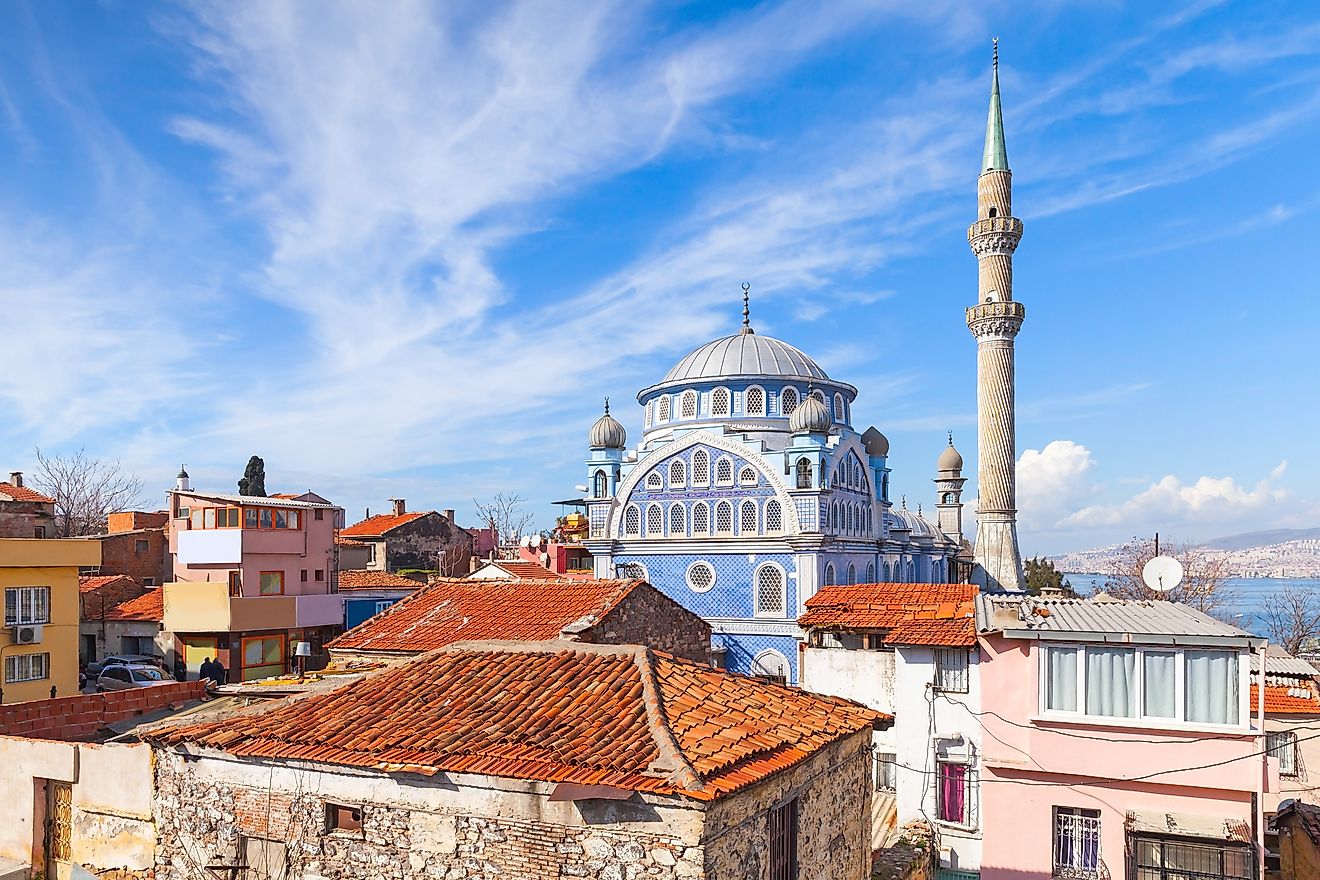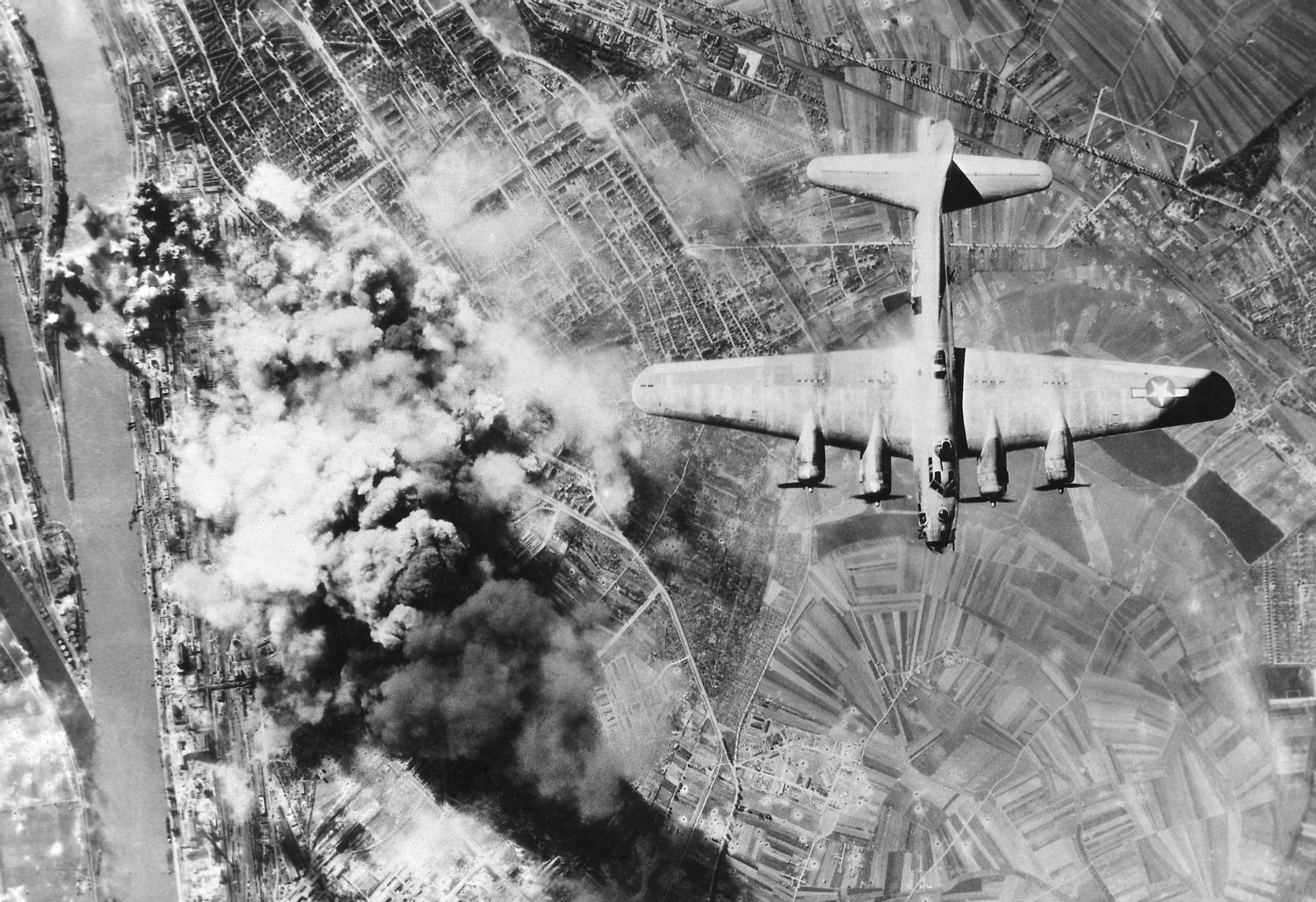
The Prelude To World War II
The period from 1919 to 1939 was a time of new ideas, geopolitical tensions, and economic turmoil. Germany, utterly humiliated after the First World War, saw the rise of Adolf Hitler. Furthermore, Japan, having undergone a period of major economic prosperity in the late 1800s and early 1900s, needed more territory to continue this growth. Its highly militaristic culture further exacerbated these tensions. Ultimately, all these developments led to the outbreak of World War Two.
The Treaty Of Versailles
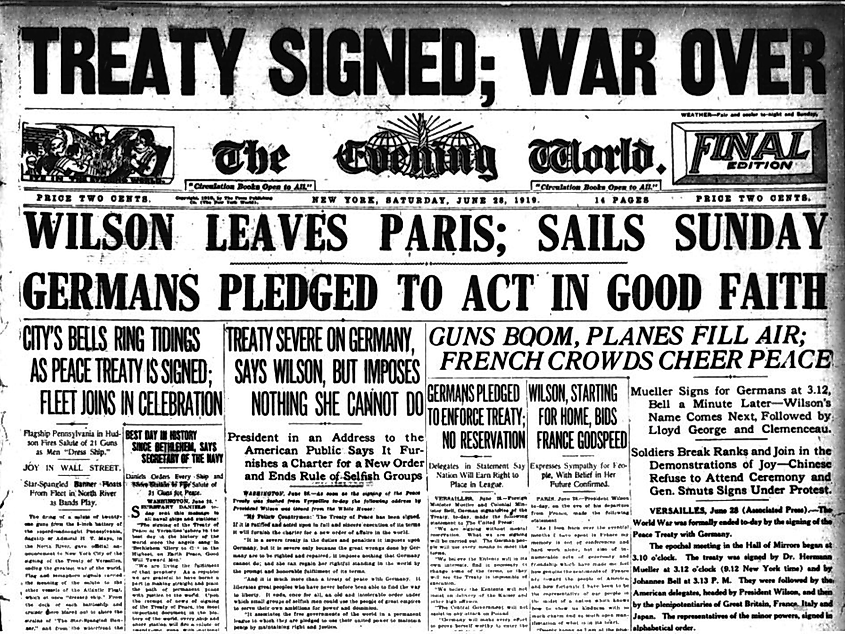
Following Germany's defeat in World War One, a formal peace treaty was drafted in Paris. The agreement, the Treaty of Versailles, stated that Germany needed to give up all of its colonies and a significant portion of its European territory. This arrangement was along with a stipulation that the German Army would be reduced to 100,000 men and that the Rhineland would be demilitarized. Germany was also denied membership into the League of Nations and forced to pay the equivalent of 33 billion American dollars in reparations to the Allied countries, along with taking sole responsibility for the war. Anger towards the Treaty of Versailles, and the system that accepted it, thereby contributed to the rise of the National Socialist German Workers Party (NSDAP, or Nazi Party), which openly wanted to destroy the newly created democracy in Germany.
The Great Depression And Hitler's Rise
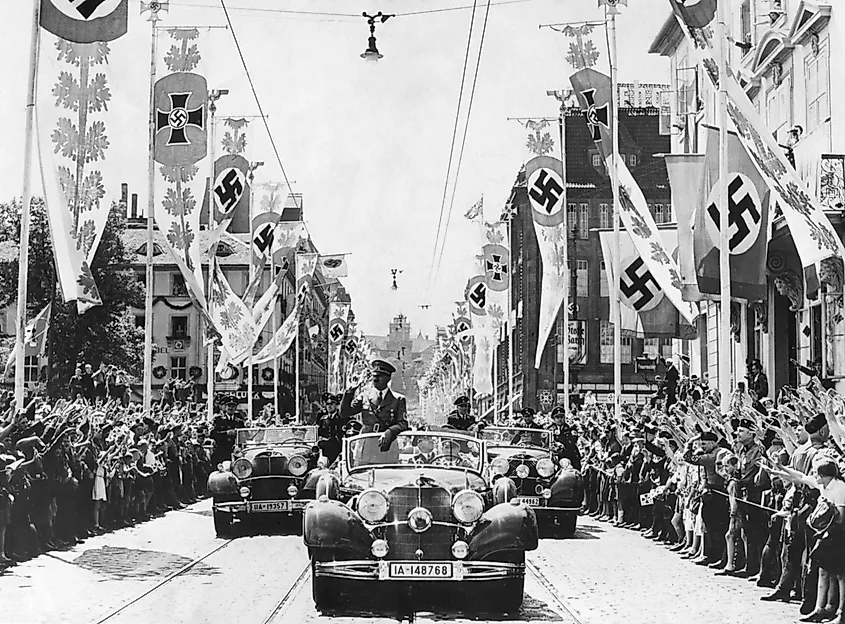
With the onset of the Great Depression in 1929, Germany was hit particularly hard. Indeed, by February 1932, 33% of the working population was unemployed. This situation was far worse than any scenario for which the government had planned, meaning it could only provide 900,000 people with unemployment or welfare benefits. This seeming incompetence, when combined with lingering anger toward the Treaty of Versailles and memories of a hyperinflationary period in the early 1920s, paved the way for the rise of the NSDAP. For instance, the Nazis won 107 seats and 6.3 million votes in the 1930 Reichstag election. Presidential elections then took place in the spring of 1932, in which Hitler won 37% of the vote. A new round of Reichstag elections that same year also saw the Nazi Party win 37%. Finally, Hitler was named chancellor on January 30, 1933. He quickly transformed Germany into a dictatorship, suspending civil liberties and passing the Enabling Act, a law that allowed him to enact laws without the Reichstag, on March 23, 1933.
Nazi Ideology
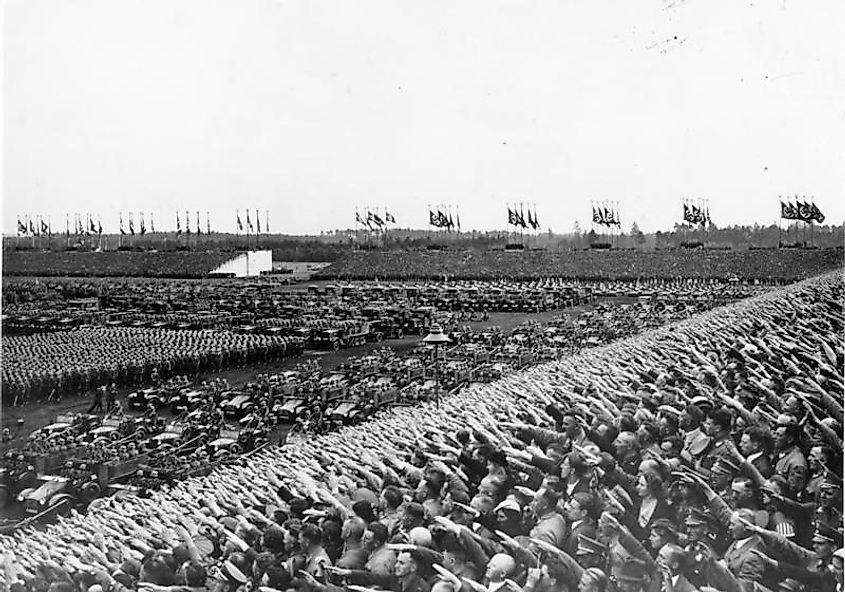
Before continuing, it is necessary to explain Adolf Hitler's worldview since doing so illuminates why the likeliness of war increased the moment he came to power. To Hitler, the nature of the world was one of struggle between races. A key component of one race winning in this struggle was having enough living Lebensraum (living space) so it could maintain steady population growth. Hence, in Hitler's mind, gaining access to living space in the East, in particular the Soviet Union, was critical for the victory of the "Aryan race." He also believed that Slavs were inferior to Aryans, thereby partly setting the stage for a genocidal conflict.
Another core component of Hitler's worldview revolved around his "understanding" of "Jews." According to Hitler, "the Jews" subverted the struggle-based nature of the world by introducing democracy, human rights, capitalism, communism, and ideas themselves. This made it so "stronger" races could lose to "weaker" ones. Hitler thought that this was what happened in the First World War and was thereby obsessed with preventing another such subversion of nature. This obsession informed most of the Nazis' foreign policy decisions.
German Re-armament and Aggression
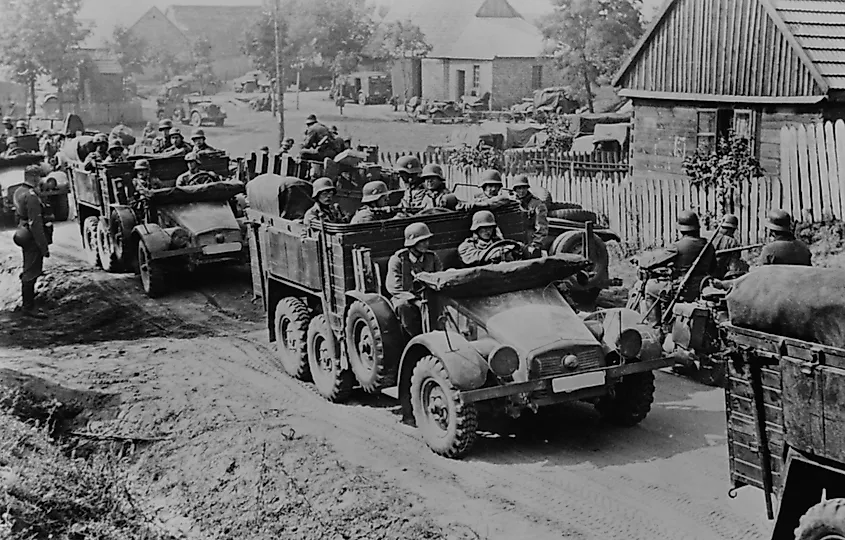
Despite some superficial instances of peaceful actions on the international stage, like a peace treaty with Poland in 1934 and a rapprochement agreement with the United Kingdom (UK) in 1935, Hitler's foreign policy in the 1930s was generally antagonistic. For instance, in October 1933, Germany left the League of Nations. Then, Hitler reintroduced conscription in 1935, dramatically increasing the size of Germany's army. On March 7, 1936, Hitler remilitarized the Rhineland. This was followed by a November 1937 meeting with his military leadership, in which he established that the timeframe for war was between 1943 to 1945. The following year, Germany annexed Austria and the Sudetenland, a region of Czechoslovakia that contained mostly German speakers. The rest of Czechoslovakia was then annexed in March 1939. Finally, on September 1, 1939, Germany invaded Poland. This was the final straw for the UK and France, and they declared war on Germany on September 3.
Japanese Economic Prosperity
While Germany was beginning a war in Europe, another conflict was already underway in Asia. However, to understand the Second Sino-Japanese War, some context is necessary. For centuries, Japan had kept itself isolated. But, in the mid-1800s, it started to open itself to the rest of the world, allowing for trade with Western powers and incorporating some of their technology, methods of military organization, and legal systems. In 1890, Japan then adopted a new constitution and became an authoritarian semi-democracy in which elections were held, but the parliament only had marginal power. All this led to significant growth, with Japan's population increasing by 15 million at the beginning of the 20th century. However, a lack of good farmland and relatively few natural resources meant that the country needed to turn to imperialism to sustain this prosperity.
Japanese Territorial Expansion
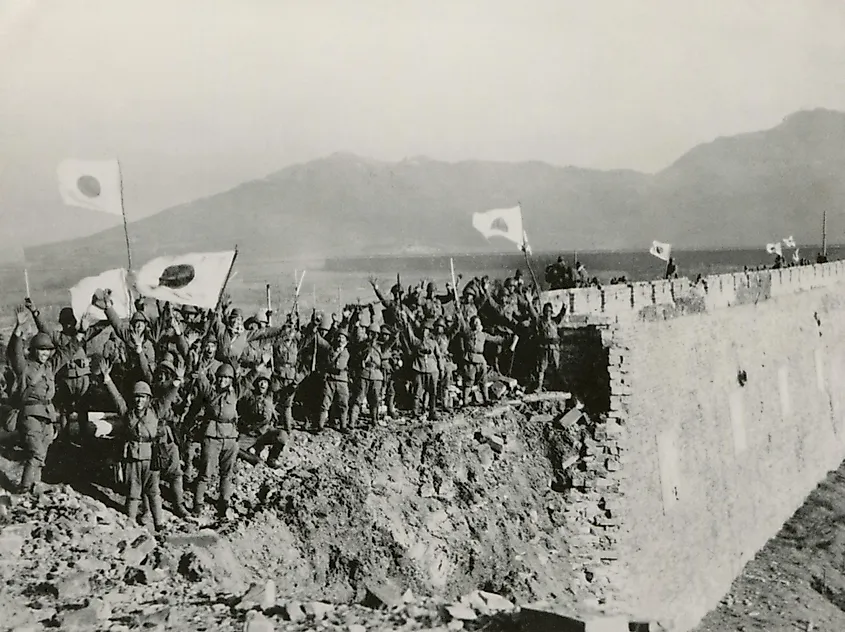
In 1895, Japan defeated China in the First Sino-Japanese War. This was followed by another military victory in 1905, this time against Russia. Then, during World War I, Japan took over a large portion of China but was not allowed to keep it following the end of the conflict. However, in the late 1920s, after years of military and diplomatic pressures, China gave Japan control of Manchuria's (a region in northern China) railways. Tensions then increased significantly in September 1931 when one of these railways was blown up. In reality, Japan was responsible for the attack, having carried it out to justify further military operations in the region. Thus, soon after the bombing, Japanese forces invaded Manchuria, setting up a puppet regime and beginning to push southward. Finally, when Chinese and Japanese soldiers exchanged fire near Peking (now Beijing) in July 1937, this gave Japan an excuse to launch a full-scale invasion of China. With that, the war in Asia began.
The prelude to World War II saw economic turmoil, geopolitical tensions, and imperial aspirations on the part of Germany and Japan. Ultimately, all these elements culminated in the largest war in world history.
